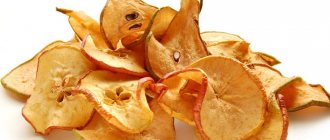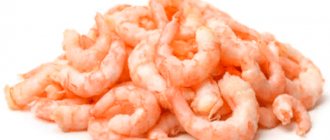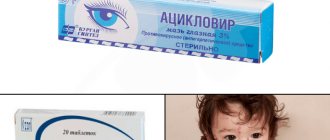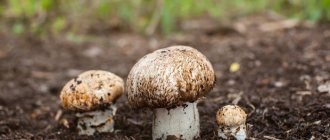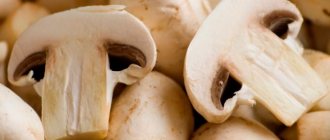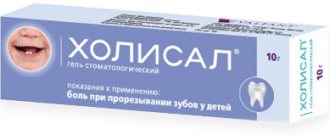Cucumbers are a familiar vegetable for both children and adults. Many people believe that it consists only of water. The composition of such a product actually contains about 95% water. However, it also contains vitamins, minerals and other beneficial substances. But this only applies to fresh vegetables.
Pickled and pickled cucumbers lose their beneficial properties and even become dangerous, especially for young children. Therefore, it is recommended to give fresh vegetables to children. Let's find out when you can give your child fresh cucumber.
The benefits and harms of cucumbers
Fresh cucumbers are rich in vitamins C and K, potassium and iodine, zinc and copper. They kill harmful bacteria, including staphylococcus. What is important is that this vegetable rarely causes an allergic reaction. And when grated, cucumber has a mild laxative effect and helps with constipation.
The vitamins and minerals in cucumbers are balanced, so the product is easily digestible and has a positive effect on the health, growth and development, and immunity of children and adults. By the way, contrary to public opinion, salted and pickled cucumbers also have some positive effects.
After cucumbers are salted or pickled, they undergo a fermentation process, which results in the formation of lactic acid. It removes excess fat and harmful cholesterol plaques from the walls of blood vessels, and prevents the development of intestinal infections.
In addition, pickles increase appetite and quickly satisfy hunger, stimulate intestinal function and regulate metabolism. They strengthen muscles and nerve cells, relieve stress and tension, help cope with physical activity and improve mood. After fermentation, the content of B vitamins and vitamin C in such products increases.
However, this product, even fresh, can have harmful effects. First of all, it contains a large amount of coarse fiber, which irritates children's intestines, provokes abdominal pain, flatulence and stool disorders.
Today, vegetables are often grown using dangerous antibiotics, nitrates and chemicals. This leads to severe poisoning and thirst, disturbances in the development and growth of the child, allergic reactions and intestinal infections. Harmful substances are difficult to wash off from vegetables, so it is advisable to peel the product before use.
But salted, pickled and lightly salted cucumbers are especially dangerous. They lose some of their beneficial properties, can cause severe poisoning and an allergic reaction, and harm internal organs.
Why does a child demand pickles?
According to nutritionists, children and adults often crave salty foods after suffering a severe infection, as well as in the case of an inflammatory process in the body. The desire to snack on a pickled cucumber is a signal of a decrease in the baby’s immunity.
The diet of a small child mainly consists of fresh food: vegetable purees and cream soup, milk and meat purees. This is another reason why he is drawn to salted and pickled vegetables. Mothers usually take responsibility for shaping their child’s menu. But grandmothers often believe that one crispy cucumber will do no harm. But, having tried pickles once, the baby may begin to demand them regularly. Especially on holidays, when there are a lot of adult treats on the common table.
A child eats raw potatoes: what’s missing?
Harmful properties of pickled cucumbers
- Lactic acid slowly eats away tooth enamel, so pickles are dangerous for caries, thin and sensitive enamel, cracks, chips and other dental problems;
- It prevents the removal of excess fluid from the body and puts a strong strain on the kidneys, which is especially dangerous for a baby with an undeveloped organ system;
- A large number of pickles eaten at one time has a negative effect on blood pressure, the heart and blood vessels, and disrupts the functioning of the liver and kidneys;
- An allergic reaction in the form of a rash, itching, and redness on the skin. In addition, swelling, nasal congestion and runny nose, redness and irritation of the eyes, and tearing may occur. You may notice nausea, vomiting, abdominal pain, and abnormal bowel movements. The most dangerous is difficulty breathing caused by internal swelling of the airways;
- Pickled cucumbers contain salt and vinegar, which are extremely harmful for children. In addition, after such treatment, the product loses up to 70% of vitamins and nutrients;
- They have a stimulating effect on nerve cells, worsen the condition of the mucous membrane, and disrupt sleep.
When can you give cucumber to a child: from how many months or years?
The transition from breastfeeding or formula feeding to solid food is a gradual process and requires the attention of parents. Pediatricians recommend vegetables as first complementary foods.
They do not require long-term adaptation, since they do not contain difficult-to-digest fats and amino acids. Cucumbers cause concern among mothers: the baby’s digestive system may not be able to cope with them.
Does such a problem exist?
depositphotos.com. Belchonock.
Composition and benefits
Cucumber is the leader among vegetables in terms of water content (mass fraction 95-98%). Includes up to 0.8% protein, 0.1% fat and 2.5% carbohydrates. The percentage of dry matter may vary depending on growing conditions: the degree of watering, fertilizer and soil composition. Contains fructose, plant enzymes, essential oils and vitamins.
Cucumber peel is a rich source of fiber, a natural adsorbent. It cleanses the intestines of a large amount of accumulated toxins. This property of cucumbers is especially important against the backdrop of deteriorating quality of baby food. In addition, cucumber peel contains carotene and ascorbic acid (in small quantities).
A unique component of cucumbers is tartronic acid. It inhibits carbohydrate metabolism and reduces the growth rate of fatty tissue in the body. Therefore, vegetables are included in the therapeutic nutrition program for obese children.
The vegetable contains folic acid and other B vitamins and carotene in small quantities.
Mineral components: silicon, potassium, iodine, sulfur.
- Potassium is responsible for the functioning of the cardiovascular and endocrine systems. In combination with sodium, it controls the water balance of the child’s body. If there is a lack of potassium, the child experiences slow growth of muscle tissue and may experience seizures.
- Iodine affects thyroid function. Participates in the development of the nervous system and mental abilities, helps in the formation of immunity. Iodine deficiency leads to serious problems in the body, the baby becomes lethargic and inattentive, and shows increased fatigue.
- Silicon ensures healthy skin, hair and nails. Its deficiency is fraught with the development of pathological conditions: anemia and softening of bone tissue.
- Sulfur is one of the five most important microelements for the body. Participates in the synthesis of certain proteins, including collagen. It is part of hemoglobin, therefore it affects the saturation of cells with oxygen and blood clotting. Sulfur deficiency leads to a general decrease in immunity - the child begins to get sick more often.
At what age should it be given?
The first vegetable complementary food for a normally developing breastfeeding child is introduced at the age of 5-6 months. When feeding with infant formula - a little earlier, at about 4.5 months. But this does not mean that your baby’s introduction to vegetables should start with cucumbers.
From how many months should I give it? You should try to introduce cucumber into the children's menu no earlier than one year of age. Its fiber is coarser than that of carrots or zucchini (the first complementary vegetables).
And the baby’s body does not produce enough enzymes to digest and absorb heavy dietary fiber, which leads to increased gas formation and colic in the baby.
But if the period of ripening vegetables is in full swing, and the child has a little time left before one year, then you can introduce him to a new taste a little earlier.
But first make sure you don't have any food allergies. The rules are the same as when adding any new product to the diet.
You need to start gradually. First, a small piece of cucumber is peeled and pureed - this way it loses an impressive part of the coarse fiber. After feeding, carefully monitor the baby's condition. If there is no negative reaction, you can continue in the next days.
It is not recommended to combine two or more new products. Otherwise, you won’t be able to determine which food your baby’s body can’t cope with.
In any case, you should consult with the pediatrician observing the baby in advance.
Harmful to young children
- Fresh fruits contain a lot of coarse fiber, which irritates the gastrointestinal tract of an infant and causes pain in the abdominal area, gas formation and stool upset.
- It can be difficult to wash off dirt from a green vegetable, which can cause the development of an intestinal infection in a baby.
- Even ground cucumbers can contain nitrates, which are dangerous for a small organism.
- Laxative properties are attributed to fresh fruits, so they are contraindicated in children prone to diarrhea.
- If your baby has gastritis, pancreatitis or biliary dyskinesia, cucumbers are prohibited and can cause serious harm.
Allergy
Cucumber has long been considered hypoallergenic, and only recently have scientists begun to note cases of intolerance.
Factors that cause an allergic reaction in a child:
- Pollen provokes an increase in antibodies in the blood - class E immunoglobulins. The body mistakenly perceives pollen as a threat and releases a number of biologically active substances that cause allergy symptoms.
- Leaves and stems can provoke a negative reaction if they come into contact with the baby's skin.
- A cucumber, like a sponge, absorbs chemical compounds that are used to treat the soil and the plants themselves during the process of growth and maturation. In this case, herbicides, mineral and organic fertilizers become the cause of the allergic response.
The most common syndrome is oral cucumber allergy, which can occur in parallel with other types, for example, a reaction to ragweed blooms.
Local symptoms are often observed:
- swelling of the tongue, lip, or larynx;
- itchy throat;
- hives around the lips;
- stomatitis;
- itching and irritation in the mouth.
More severe symptoms include:
- runny nose and sneezing;
- redness and tearing of the eyes;
- acute abdominal pain, stool upset and nausea;
- anaphylactic shock or Quincke's edema.
In some cases, a cucumber allergy can be confused with a digestive disorder, which is accompanied by diarrhea and/or vomiting.
If one or more symptoms occur, you should seek help immediately. To eliminate symptoms, the doctor will prescribe antihistamines: diazolin, tavegil, etc.
Skin areas affected by urticaria are treated with topical medications: Zyrtec, Sinaflan.
Hormonal therapy is used to quickly relieve angioedema: prednisolone, hydrocortisone. The listed medications, as well as their dosage, can only be prescribed by a specialist.
Treatment also involves following a hypoallergenic diet and completely avoiding cucumbers.
Marinated and salted
Doctors do not recommend giving children under three years of age salty foods. But some kids love pickled cucumbers so much that their mothers ignore the warnings.
- Pickled vegetables contain vinegar and salt, which are harmful to young children. For example, vinegar destroys tooth enamel and irritates the baby’s nervous system. During the pickling and canning process, up to 80% of vitamins are destroyed.
- Lightly salted cucumbers retain more vitamins. They contain a certain amount of lactic acid, a natural prebiotic that creates a favorable environment for beneficial microorganisms in the gastrointestinal tract. But this product also contains a lot of salt.
Pickled (but not canned) cucumbers can be given to children over three years of age in limited quantities. It is better to wait until 5-7 years with pickled vegetables.
Tips for choosing
The main rule when choosing cucumbers for a children's menu is seasonality. In other words, it is best to introduce vegetables into a child’s diet during the natural maturation cycle. The results of a baby’s first acquaintance with new food are significantly influenced by its origin: ground cucumbers are perceived better than greenhouse and greenhouse cucumbers.
When choosing, conduct a visual inspection. Buy bright green specimens of an even shade, elastic and strong from the stem side, without bruises or cracks. Yellowish spots indicate that the fruits are overripe and are not suitable for food. Medium-sized cucumbers, up to 7 cm long, grown without chemicals are ideal. Large cucumbers often taste bitter.
Do not give fruit to your child if:
- there are black spots on the skin at the initial stage of decay: even by cutting off the damaged part, you will not be able to escape from dangerous bacteria;
- cracks are visible on the surface: harmful microorganisms have already entered the vegetable;
- The cucumbers are too wet, which means they were soaked in water to give them a fresh look and elasticity.
Preparations for the winter
The secret to making baby-safe pickled cucumbers for the winter is to replace acetic acid with citric acid. The difference in taste is small, but the benefits are much greater. Adults will love them too.
To prepare the marinade you will need (the amount of ingredients is calculated for a three-liter jar):
- 2 tbsp. l. salt;
- 5 tbsp. l. Sahara;
- 1.5 tsp. citric acid;
- herbs and spices.
Cooking method:
- Place an umbrella of dill, a horseradish leaf, 1-2 cloves of garlic, 2 black peppercorns, several currant leaves (if the baby is not allergic to this plant component), and a bay leaf at the bottom of a 3-liter container.
- The entire volume of the jar is tightly filled with fresh, thoroughly washed cucumbers.
- The contents are poured with boiling water and left for 10 minutes, after which the liquid is drained, a new portion is brought to a boil, and the procedure is repeated.
- Salt, sugar and citric acid are added to the marinade, boiled, poured over the contents of the jars and rolled up with lids.
Cucumbers can be stored at room temperature. They can be safely given to a child over three years old until the next season.
When can you give cucumbers?
A small amount of fresh cucumber can be given to a one-year-old child to try. At the same time, basic vegetables should be included in the baby’s complementary feeding, including zucchini and pumpkin, cauliflower and broccoli, and tomatoes. The diet should also include meat and fish purees, cereals, and basic fruits. What and when to introduce into complementary foods for your baby, see here.
Start complementary feeding with a small piece of cucumber. Rinse the vegetable thoroughly and peel off the skin. After the first feeding, monitor the baby's reaction. If the child exhibits symptoms of food allergy or poisoning, administration will have to be postponed. If necessary, consult a doctor.
If the baby accepts the new vegetable well, you can periodically give the baby cucumbers. Be sure to clean the product to remove nitrates, germs and contaminants, chemicals and rough fibers. You should start giving larger pieces to your child only when he learns to chew. This approximately occurs at 18-24 months.
At first, grate the vegetable to prevent your baby from choking. Children up to one and a half years old are given up to 50 grams of cucumber per day. At 1.5-3 years, the dosage is increased to 100 grams, which is one average fruit.
Pickled cucumbers are not recommended for children under three, and preferably under five years of age. Cucumbers in any form are not recommended for diarrhea. Vegetables should not be given to patients with stomach and intestinal diseases, including gastritis and pancreatitis. They are prohibited for diseases of the heart and blood vessels, liver and kidneys.
What are the benefits for the child? Composition and calorie content
Kids do not need salted (and especially pickled) cucumbers to fill nutritional deficiencies. There are safer and healthier products for this. But homemade pickles can offer certain health benefits.
- Salted and pickled cucumbers contain much less vitamins than fresh ones: during the cooking process, most of them are lost (A, K, PP, B1, B2, C). But minerals remain: iodine, calcium, calcium, iron, fluorine, magnesium, cobalt, sulfur, zinc.
- Low calorie content (14 kcal per 100 g) is an important plus, especially for children overweight. There is also little protein, fat and carbohydrates, provided that the product is not oversweetened.
- Due to their high iodine content, pickles can serve as an excellent prevention of deficiency of this microelement (to which the vast majority of the Russian population is prone).
- They promote the production of saliva and hydrochloric acid in the stomach, thereby preparing the gastrointestinal tract for the digestion of food. Hence the appearance of appetite even in small-toothed children.
- Cucumbers consist of 2/3 natural structured water, so in small quantities they can provide a water-salt balance.
- They contain a lot of fiber, which fills the stomach, stimulates digestion and intestinal motility, prevents the absorption of excess fat from food, and prevents constipation.
- Pickled vegetables are rich in lactic acid, which is formed during the fermentation process. It suppresses the growth of bacteria that cause spoilage of cucumbers and cleanses the child's body of toxins. Stimulates digestive processes.
- Barrel cucumbers contain little sugar (if the recipe is followed). Thanks to the fermentation process, the amount of glucose and fructose in them is reduced compared to fresh vegetables.
What cucumbers can a child eat?
The cucumbers are first grated, then given in pieces. At the same time, do not forget to rinse the product well and peel the peel. Since they increase appetite, give the vegetable to children before the main meal. And to improve the absorption of vitamins, season the vegetable with vegetable oil or sour cream.
Cucumber goes well with boiled eggs, meat, fish, cheese and other vegetables. However, the combination of tomatoes and cucumbers increases the load on digestion, so such salads are best given to children over two to three years of age. Choose for your child dense fruits of ground varieties, with matte skin and rich color.
Do not accept food with stains, bruises or rotten areas. Do not take large, yellowed and overripe fruits, long spring varieties, as they often cause poisoning and stomach upsets. Give preference to young summer cucumbers with green skin and small seeds.
After heat treatment, cucumbers lose almost all their beneficial properties. Therefore, this vegetable is not used for preparing stews and other similar dishes, but is eaten only fresh. From fresh cucumber you can prepare a variety of salads and drinks for kids.


